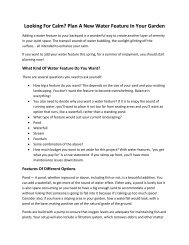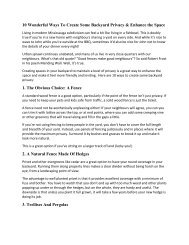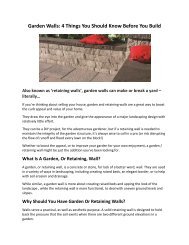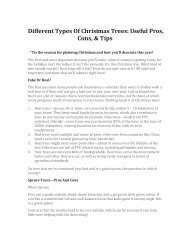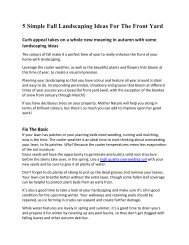Fall Gardening Tips – 23 Things You Can Do Now
The fall season is one of the most vibrant and wonderful seasons. It is the best time for us to do fall gardening to prepare for next spring. http://www.toemar.ca/23-things-you-can-do-for-fall-gardening/
The fall season is one of the most vibrant and wonderful seasons. It is the best time for us to do fall gardening to prepare for next spring. http://www.toemar.ca/23-things-you-can-do-for-fall-gardening/
Create successful ePaper yourself
Turn your PDF publications into a flip-book with our unique Google optimized e-Paper software.
Cut your lawn before the first snow arrives, probably just before November.<br />
Why: By cutting your lawn to approximately 2.5 to 3 inches in height, this allows your grass to<br />
stay upright. This is important because grass that is too tall, tends to bend over, mat down and<br />
shade itself. In turn, this creates an environment where your grass is more prone to disease,<br />
weeds, and moss, especially in a wet season like spring or late-season when there is heavy<br />
snow. Like plants, lawns also need good airflow.<br />
How: Lower your lawn mower to the appropriate height starting with the highest setting and<br />
move down until you get to close to approximately 3 inches. Make sure that the lawn mower is<br />
turned off when you are lowering it.<br />
4. Protect the <strong>You</strong>ng Fruit Trees<br />
Why: Protect the young bark of fruit trees from rodents. Fruit producing trees and young<br />
flowering trees are susceptible to damage from rabbit and mice during the winter. Trees<br />
affected by this include crabapples, fruit bearing apples, pears, and plums.<br />
How: <strong>You</strong> can use spiral protectors on the bottom of the tree trunk to get great results. Place<br />
the plastic spiral protector on trees that are less than 10cm in diameter (measured 80cm from<br />
the trunk). Another alternative non-toxic method is to use a product called Ropel.<br />
5. Upright Evergreen Trees<br />
Why: Junipers and Cedar trees need to be protected from the drying effects of the wind and<br />
the potential burning effects of late winter sun as it reflects off of the snow.<br />
How: <strong>You</strong> can simply protect these trees using burlap. Preferably two layers of burlap should<br />
be used for the best results. Secure the burlap with the use of garden twine.<br />
6. Broad Leafed Evergreen Trees<br />
Why: Dessication is the drying out of the trees tender stems and foilage because of the winter<br />
wind. Evergreen trees like rhododendrons, yews, boxwood, holly and other broad-leafed<br />
evergreen trees are susceptible.<br />
How: <strong>You</strong> can use the burlap option (see above) or there is a product called Wilt-Pruf that does<br />
the job. <strong>You</strong> can prevent dessication with a single application.<br />
7. Plant Shrubs and Evergreens


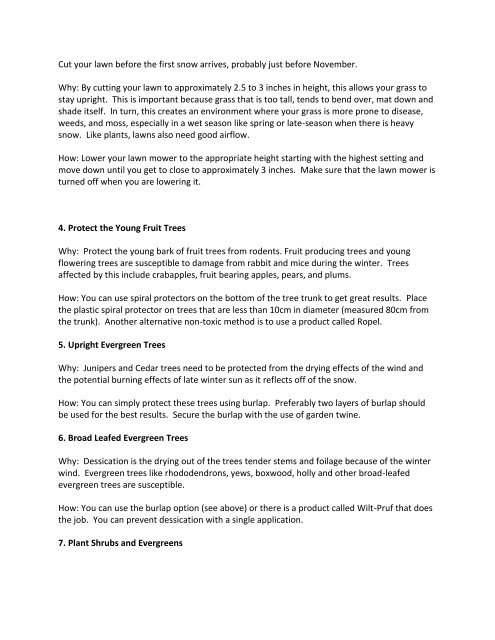

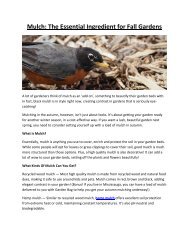

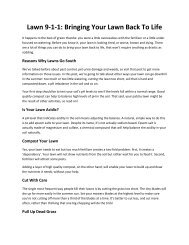


![What’s Hot In Backyard Design in 2018 [6 Tips to an Amazing Yard]](https://img.yumpu.com/60436469/1/190x245/whats-hot-in-backyard-design-in-2018-6-tips-to-an-amazing-yard.jpg?quality=85)
